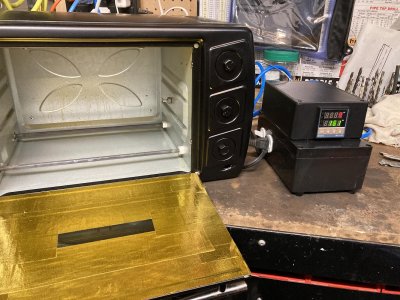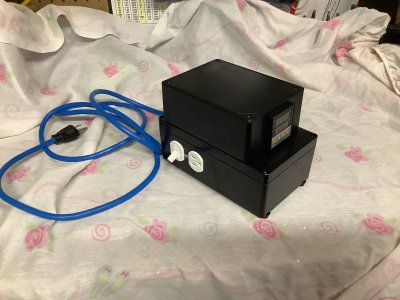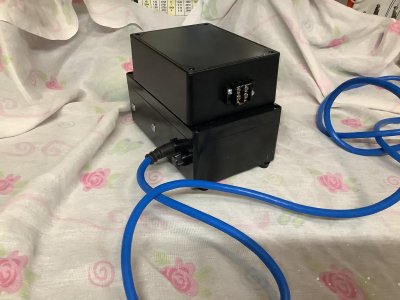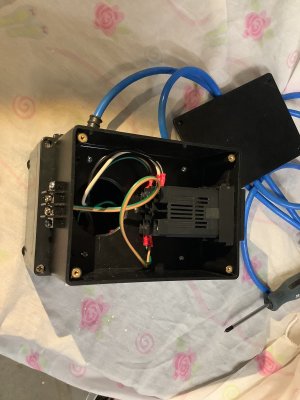An Arduino is sure less expensive than some of the ramping PID controllers. If you can find good code to copy.
There are some good sketches around for the DS18B20 digital temperature probe as well as the older TMP36 analog sensor and an Arduino. Both max out at 125C, but a kludge I've used is to place a piece of aluminium or steel flat bar in a strategic location
inside the oven, then attach the temperature probe to the
outside of the oven on top of it. Attach a heat shield around the sensor and calibrate it using an accurate temperature gun such as a Fluke. By adjusting the surface area of the flat bar and the material from which it is made of you can dial in the correlation between inside and outside temp, as well as the rate at which it dissipates (which is related to deadband). There is a technical name for this type of system in thermodynamics, but of course I can't think of it now. It's an indirect feedback loop of some type.
The code lets you scale the response according to your needs, so if you are comfortable with writing sketches there is tons of flexibility you can build in, including ramping functions. Adding the LiquidCrystal library to the include code in the sketch gives you a pretty cool display for a really useful project. There is another technique of placing the sensor at the end of an insulated tube and using a small fan running through the oven to push the hot air through the tube to the sensor at the end. This is more accurate, but difficult to retrofit. However, both techniques allow you to utilize the accuracy of the DS18B20 in an environment that would otherwise melt it. It's not perfect, but beats the cost of more expensive sensors specifically designed for higher heat. I read that NASA uses this same technique in some cases, but ups the game by measuring multiple points outside the engine/oven/chamber and using some fancy math modelling to come up with an accurate temperature. So it can't be that kludgy I guess.
If anyone in the Calgary area wants to play with these sensors, I have a couple of the waterproof versions of the DS18B20's laying around.
I actually made an overly complicated version of one of these for a PTZ CCTV camera once that turned on a heater when the camera's case got too cold. It was overkill by a factor of 1000, and had no practical application on the scale I built it. But it was a challenge and learning experience for me that mixed metal fabrication, electronics, CCTV, programming and math.
(It probably goes without saying that I had no girlfriend in high school though.)







